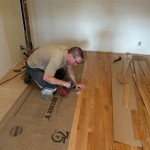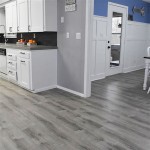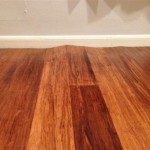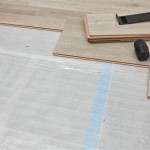Wood Flooring That Snaps Together: A Guide to Click-and-Lock Installation
Wood flooring has long been a popular choice for homeowners seeking durability, beauty, and value. However, traditional installation methods involving nails or glue can be time-consuming, messy, and require specialized skills. Fortunately, advancements in flooring technology have brought about click-and-lock systems, offering a faster, cleaner, and often DIY-friendly option. This article will delve into the workings of wood flooring that snaps together, exploring its benefits, considerations, and common types.
How Click-and-Lock Wood Flooring Works
Click-and-lock wood flooring, also known as floating floor, relies on a sophisticated interlocking system. Each plank features tongue and groove edges, along with a unique locking mechanism. When two planks are brought together, the tongue of one plank slides into the groove of the other. A slight pressure or "click" engages the locking mechanism, creating a secure and tight connection. No glue, nails, or staples are required.
The locking mechanism varies depending on the manufacturer and type of flooring. Some systems use a simple tongue and groove with a click-and-lock mechanism, while others employ advanced profiles with multiple locking points for enhanced stability. The specific locking mechanism is designed to withstand foot traffic, furniture weight, and other typical wear and tear.
Benefits of Click-and-Lock Wood Flooring
Click-and-lock wood flooring offers several advantages over traditional installation methods:
1. Faster and Easier Installation
The click-and-lock system significantly simplifies installation. Homeowners with minimal DIY experience can often install click-and-lock flooring themselves, saving on labor costs. The process typically involves laying down a moisture barrier, installing an underlayment for sound insulation and cushioning, and then simply clicking planks together.
2. Less Mess and Disruption
Click-and-lock flooring eliminates the need for messy glues or hammering nails, reducing dust and debris. This minimizes disruption to daily life during installation and cleanup. The clean installation process makes it ideal for renovations or projects where minimizing mess is crucial.
3. Flexibility and Reinstallation
Unlike glued-down flooring, click-and-lock planks are not permanently affixed to the subfloor. This provides flexibility for future renovations or moving. The flooring can be easily removed and reinstalled in a new location, saving the cost of replacing the entire flooring.
Types of Click-and-Lock Wood Flooring
Click-and-lock technology is available in various types of wood flooring, catering to different preferences and budgets.
1. Engineered Wood Flooring
Engineered wood flooring is a popular choice due to its stability and affordability. It consists of a core layer of plywood or other stable material topped with a thin veneer of real wood. Engineered wood flooring is often available in a wider array of wood species and finishes, offering versatility in design.
2. Solid Hardwood Flooring
Solid hardwood flooring is made entirely from a single piece of wood. It is renowned for its durability and natural beauty. While solid hardwood can be more expensive than engineered wood, it can be refinished multiple times, extending its lifespan.
3. Laminate Flooring
Laminate flooring is a cost-effective alternative to real wood. It features a core layer of high-density fiberboard with a decorative layer that simulates the look of wood. While not actual wood, laminate flooring offers a durable, scratch-resistant, and water-resistant option.
4. Bamboo Flooring
Bamboo flooring is an eco-friendly alternative to traditional wood. It is a fast-growing grass that is harvested sustainably. Bamboo flooring is renowned for its strength and durability, and it often comes with a click-and-lock installation option.
When choosing click-and-lock flooring, it is essential to consider factors such as:
- The intended use and traffic level of the room
- The desired aesthetic and color
- The budget and available resources
- The subfloor condition and its compatibility with the chosen flooring
It is advisable to consult with a flooring specialist to receive personalized recommendations and guidance on selecting the ideal click-and-lock wood flooring for your needs.

Why You Should Consider Snap Together Laminate Homeadvisor

How To Install Lock Engineered Hardwood Flooring

Snap Together Flooring Easy Home Designing Unique Wood Floors

Cedar Flooring Snap Together Edge Superior Saunas

How To Install Laminate Floors

Snap Together Hardwood Flooring Ultimate Guide And Benefits

Interlocking Deck Tiles Snap Together Wood Flooring 12 X Eucalyptus Hardwood Outdoor For Patio Floor Decking Tile Outdoors Balcony Wooden 10 Pcs Com

Guide To Installing Laminate Flooring Diy Family Handyman

Laminate Wood Flooring Ideas Diy Floors Cost

Bruce American Originals Ginger Snap White Oak 3 4 In T X 1 W Varying L Solid Hardwood Flooring 22 Sqft Case Shd3060 The Home Depot
Related Posts








